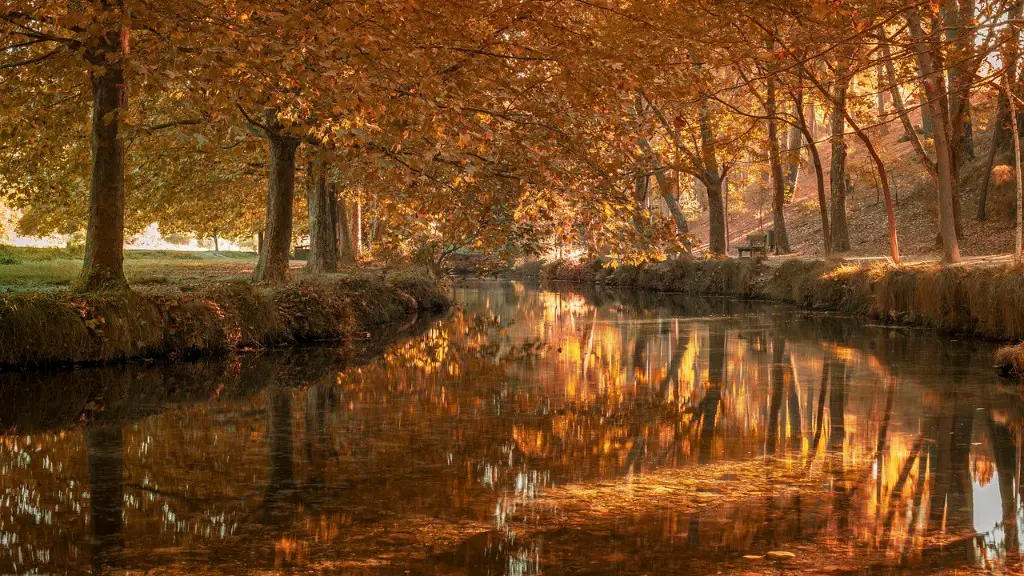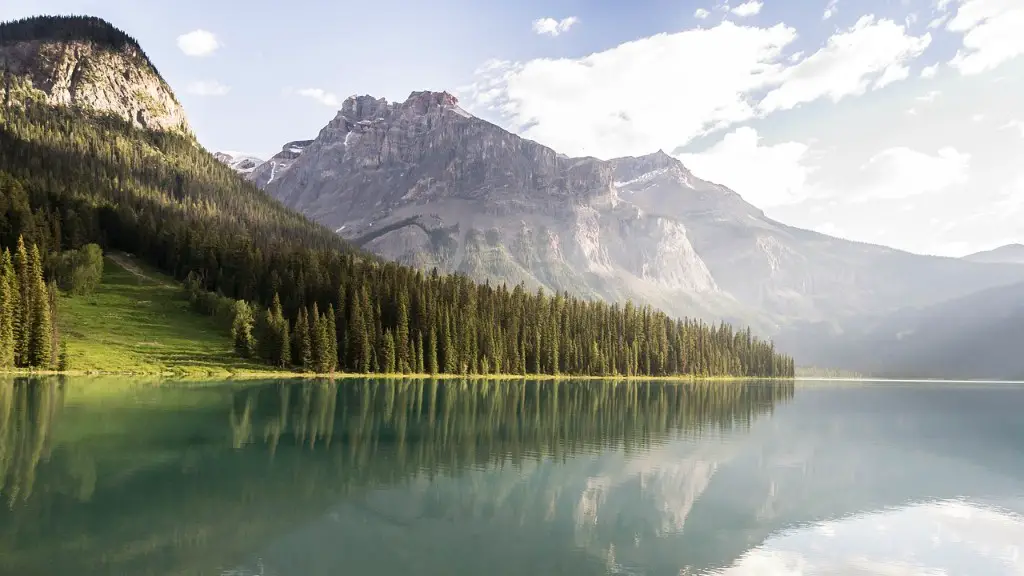The Yangtze River is an important river system in East Asia and the longest river in the continent, stretching more than 6,300 kilometers (3,900 miles) from its source in the Tibetan Plateau to its mouth in the East China Sea. As a crucial source of water and food, the Yangtze River has played a significant role in the development of the region’s economy, culture, politics, and environment for many centuries. In fact, it is estimated that the Yangtze River supports more than 420 million people, or almost one-third of China’s population.
The Yangtze River basin, which covers about 1.8 million square kilometers (about 700,000 square miles), is an enormous ecosystem that supports a great diversity of wildlife. Many of the basin’s flora and fauna are economically important for local fishers, farmers, and foresters, who depend on the river for their livelihoods. The Yangtze River is home to several endangered species, such as the Chinese sturgeon, the Yangtze Alligator, and the Yangtze River dolphin.
The Yangtze River is also a major source of water for agriculture in the region. Irrigation projects have allowed farmers to increase their crop yields and help combat poverty in rural areas. Water resources from the Yangtze River have also fuelled the economic growth and industrial expansion of cities like Shanghai and Chongqing, which are located along the river.
The Yangtze River is a key transportation route, connecting major cities and regions, and allowing trade and commerce to flourish. This has opened up opportunities for people to travel, engage in business, and explore tourism. Thus, the Yangtze River has been instrumental in improving the standard of living of the local population and in connecting China to global markets.
In recent years, the Yangtze River has been facing a number of challenges. It is under threat from pollution due to industrial waste and agricultural runoff. In addition, the country’s population growth has put considerable strain on its water resources. In response, the Chinese government has implemented a number of measures to protect the river and its ecosystem.
Overall, the Yangtze River is an important river system in East Asia, providing a wide range of benefits to more than 420 million people. Its role in the region’s development is undeniable and should not be overlooked. The Chinese government should continue to make efforts to preserve and protect the river’s environment and its surrounding ecosystem, so that its people and its wildlife can continue to enjoy its benefits for many years to come.
Yangtze River and Economic Development
The Yangtze River has been integral for the development of the economy in China, providing transportation routes and irrigation systems for agriculture, allowing trade and commerce to flourish in the region. This, in turn, has enabled cities to experience a significant economic boom, especially along the Yangtze River, where economic hubs have been built. Shanghai, the second most populous city in China, is a prime example of the River’s pivotal role in economic development.
The city of Shanghai, which hosted the 2010 World Expo, has become an important global financial and trading hub. International organizations such as the World Bank, the International Monetary Fund, and the Shanghai Cooperation Organization have established offices in Shanghai. The city is also home to Asia’s largest stock exchange, the Shanghai Stock Exchange, and many of the largest Chinese companies are headquartered in Shanghai.
Water resources from the Yangtze River have been used to meet the needs of industrial and agricultural projects along the river’s banks. Industrial projects have allowed the city to diversify its economic base and become an important manufacturing and service center. Many renowned companies have chosen to locate their factories in Shanghai, including multinationals such as General Electric, Siemens, Motorola, Apple, and Fuji.
The Yangtze River has thus been essential in powering the economic growth of Shanghai and other cities in the region. Whereas the cities have seen great progress, the people living in rural areas along the river have seen their standard of living improved as well. The growth of the tourism sector has contributed to job creation and poverty alleviation in those areas.
The Yangtze River has been a source of wealth and prosperity for many centuries and it continues to be an important economic driver in the region. Its role in urban and rural economic development should continue to be recognized and supported by the Chinese government.
Yangtze River and Environmental Issues
The Yangtze River has been facing a number of environmental challenges in recent years. Pollution, over-fishing, and damming have put a strain on the river system and damaged its surrounding ecosystems. The Chinese government has implemented a number of policies and projects to address these issues but more needs to be done to protect the river’s environment and its species.
Pollution has been one of the most critical environmental issues that the Yangtze River has had to confront. The river’s polluted water is posing a threat to human health and marine wildlife. Industrial waste, agricultural runoff, and sewage are the main sources of water pollution in the river and the adjacent coastal areas. The government has taken steps to reduce these sources of pollution, but more needs to be done to effectively tackle the issue.
Over-fishing is also a major threat to the Yangtze River’s ecosystem. Many of its fish species, such as the Chinese sturgeon, the Yangtze Alligator, and the Yangtze River dolphin, are endangered. The government has implemented fishing bans in certain areas to protect the endangered species, but more drastic measures are needed to fully enforce the bans and bring back the depleted populations of fish.
In addition, the Yangtze River basin has been affected by dam building. Large-scale dams have been built on the river and its tributaries, leading to changes in the river’s flow and water levels. This has caused a significant decline in certain fish populations and has had a negative impact on the river’s wetlands and other ecosystems.
The mounting environmental issues in the Yangtze River basin have had a detrimental effect on its ecosystems and the people who depend on them for their livelihoods. The Chinese government must take serious steps to protect the Yangtze River and its surrounding environment. The government needs to strengthen its policies and investments in clean energy, sustainable fishing practices, and other solutions that will help preserve the river and its species.
Yangtze River and Conservation Efforts
The Chinese government has implemented a number of initiatives to protect the Yangtze River and its environment. These initiatives are aimed at preserving the river system and its ecosystem, as well as ensuring that its resources are used sustainably and equitably.
In 2018, the Chinese government launched the ‘Yangtze River Protection Programme’ (YRPP) which aims to strengthen environmental protection policies and laws, improve water quality, and promote sustainable development in the Yangtze River basin. Under the program, the government has put in place a number of measures to reduce pollution, promote clean water practices, and protect biodiversity.
The government has also taken steps to restore the Yangtze River’s wetlands. In 2018, the National Wetland Conservation Plan was launched, with the aim of restoring more than 5,000 wetlands in the Yangtze River basin. Wetlands play an important role in protecting the region’s biodiversity and are a valuable source of food, water, and livelihoods for the local people.
The Chinese government has also implemented a number of projects to reduce over-fishing and promote sustainable fishing practices in the Yangtze River. For example, it has set up the ‘Yangtze River Fishery Protection Areas’ which aim to reduce fishing pressure, protect the endangered species, and promote sustainable development in the region.
Overall, the Chinese government has taken some important steps to protect the Yangtze River and its surroundings. It is now up to the government to ensure that these initiatives are implemented effectively and that the region’s ecosystems and wildlife can continue to be protected for future generations.
Yangtze River and Cultural Heritage
The Yangtze River is home to a variety of cultural sites, many of which are of great historical and religious significance to the region. These cultural sites are a testament to the rich history of the region and reflect its unique cultural heritage.
The Three Gorges area along the Yangtze River is home to a number of important cultural sites, such as the Three Gorges Dam, the 5,000-year-old town of Zigui, and the Qu Yuan Temple. Other sites include the White Cloud Cave, which served as the site of a 5th-century Buddhist temple, and the Shibaozhai Pagoda, which was built in the 11th century.
These sites are of significant historical importance and attract thousands of tourists every year. By visiting these sites, visitors may gain an in-depth understanding of the region’s history and culture. This can help them appreciate the importance of preserving the region’s cultural heritage.
The Chinese government has also taken steps to protect the cultural sites in the Yangtze River basin, such as the Chengdu Wujie Temple, which was built in 1571 and is designated as a UNESCO World Heritage Site. The government has also implemented a number of infrastructure projects in the region, in order to make the cultural sites more accessible to tourists.
In summary, the Yangtze River is home to a variety of cultural sites of great historical and religious significance. These sites are a reminder of the region’s history and culture, and should be protected and preserved for future generations.
Yangtze River and Tourism
The Yangtze River is one of the most popular tourist destinations in China, thanks to its stunning scenery and its rich cultural heritage. The region has something to offer to visitors of all tastes, whether they are looking for outdoor activities or cultural attractions.
The Yangtze River Three Gorges area, which stretches from Chongqing to Yichang, is a popular tourist destination in the region. Visitors to this area may enjoy rafting, boating, and exploring the breathtaking natural scenery. The region is also home to a number of historical sites, such as the Shibaozhai Pagoda, the 5,000-year-old town of Zigui, and the Qu Yuan Temple.
The region also attracts visitors with its unique cultural attractions. Visitors may explore traditional villages, sample local cuisine, or take part in ancient ceremonies and festivals. In addition, the region has become a popular destination for avid cyclists, as it offers stunning roads and trails that can be explored on two wheels.
The tourism industry in the Yangtze River basin has had a positive impact on the local economy, creating jobs and helping to alleviate poverty. It has also opened up opportunities for the locals to interact with visitors and exchange ideas and experiences. Thus, the Yangtze River basin has become an important tourism destination in China, attracting people from all over the world.
In conclusion, the Yangtze River basin has become an increasingly popular tourist destination in China. Its impressive natural scenery and its cultural attractions make it an ideal destination for visitors of all tastes, and its tourism industry has had a positive impact on the local economy.





